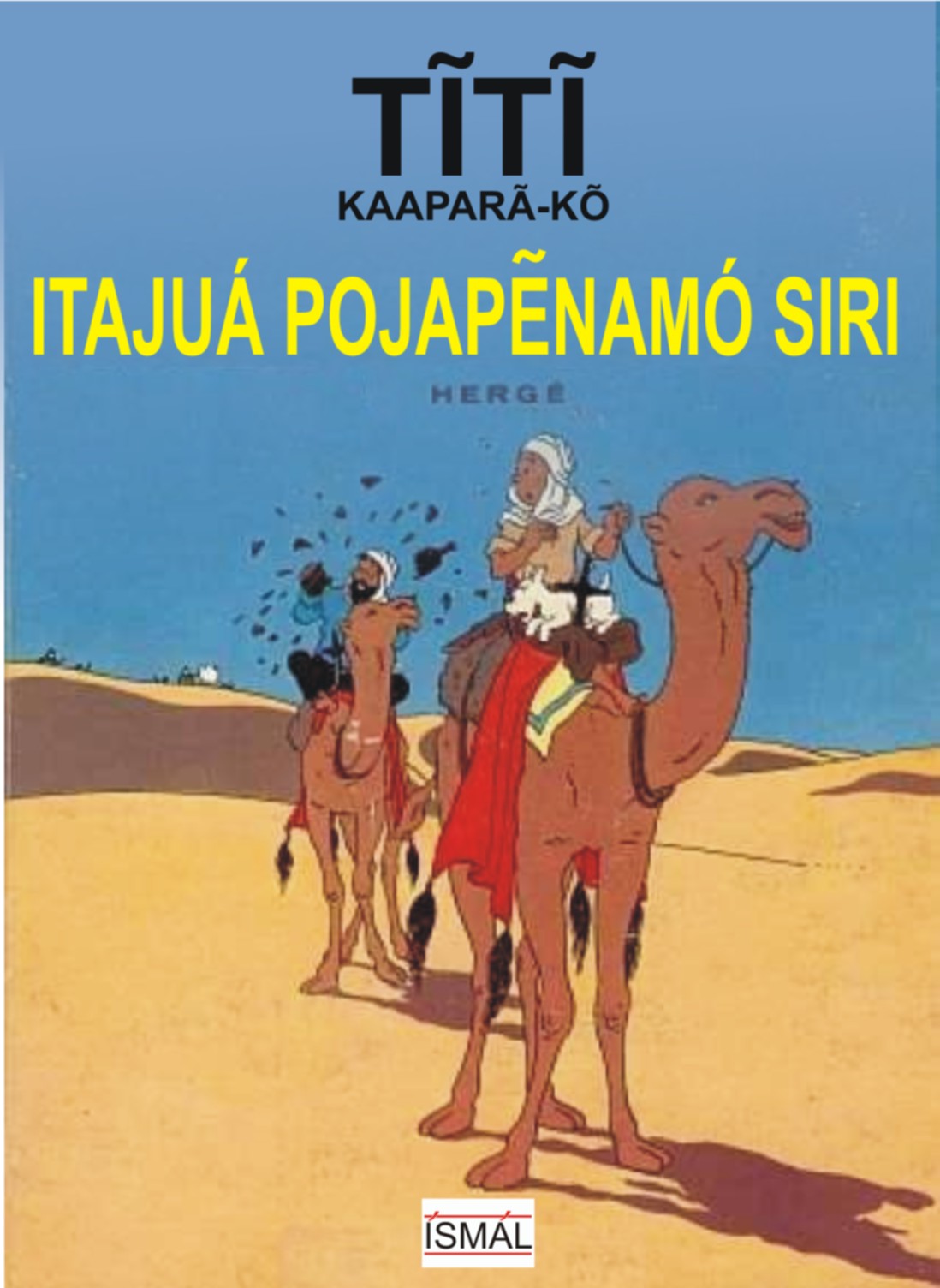
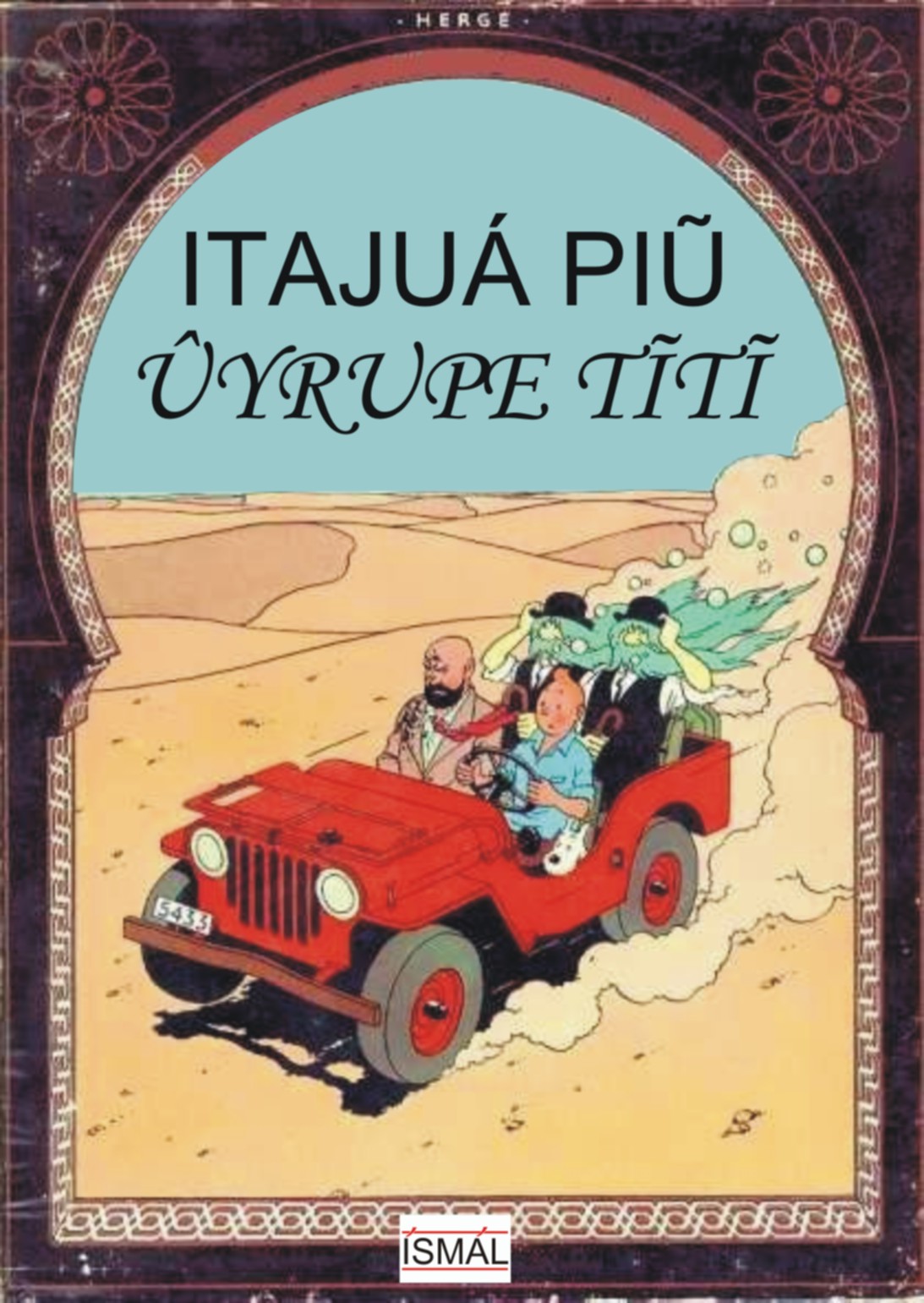
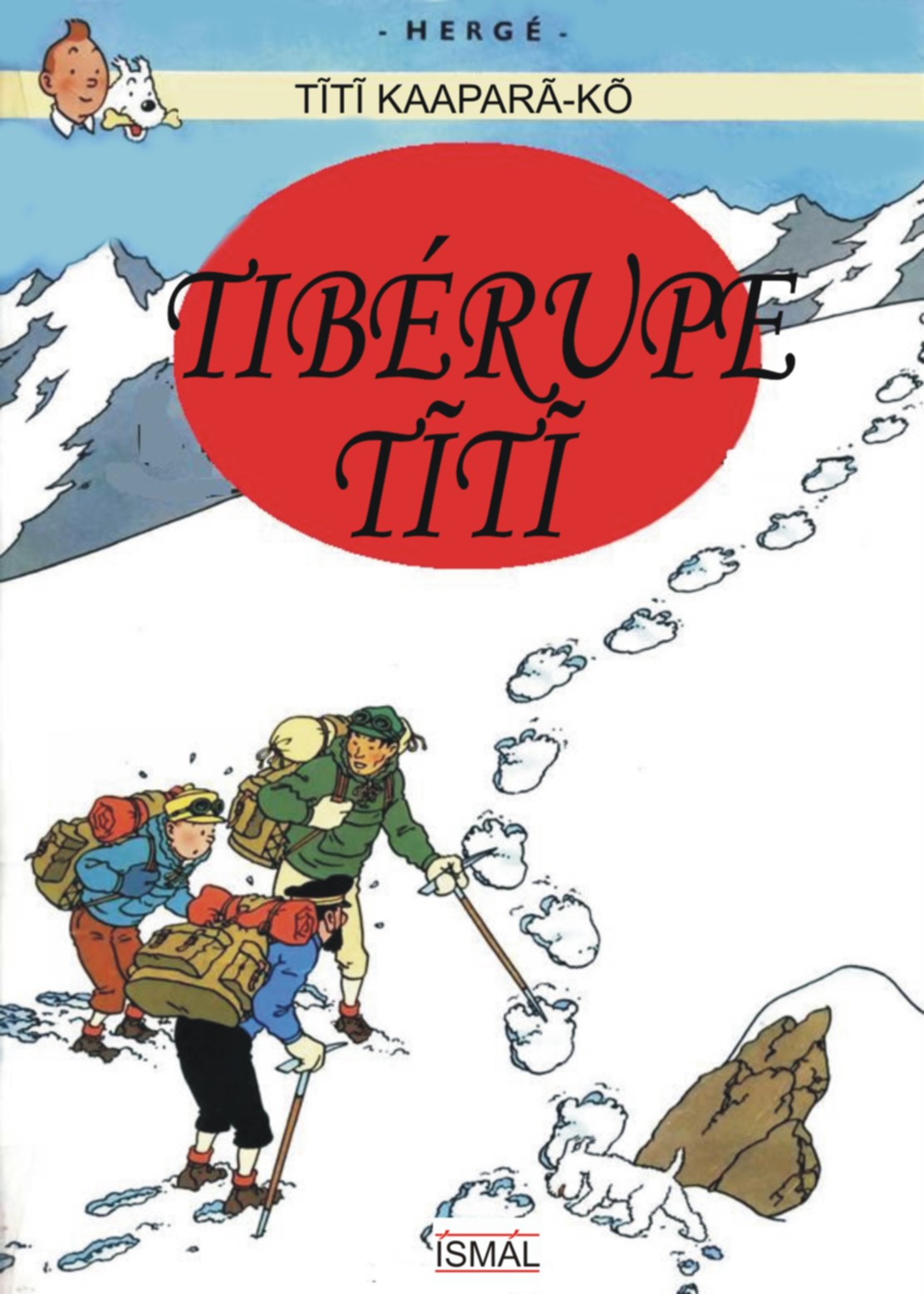
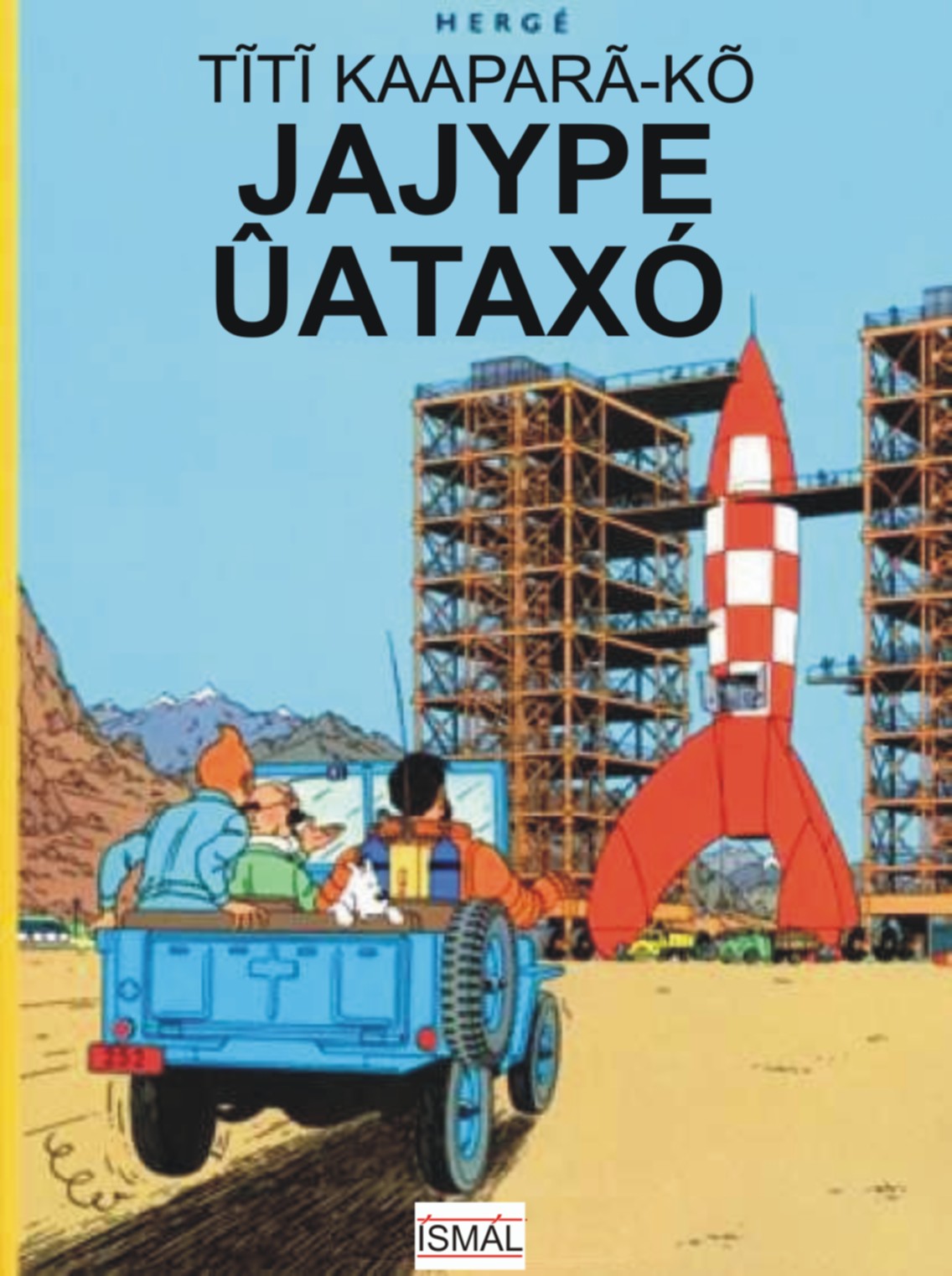
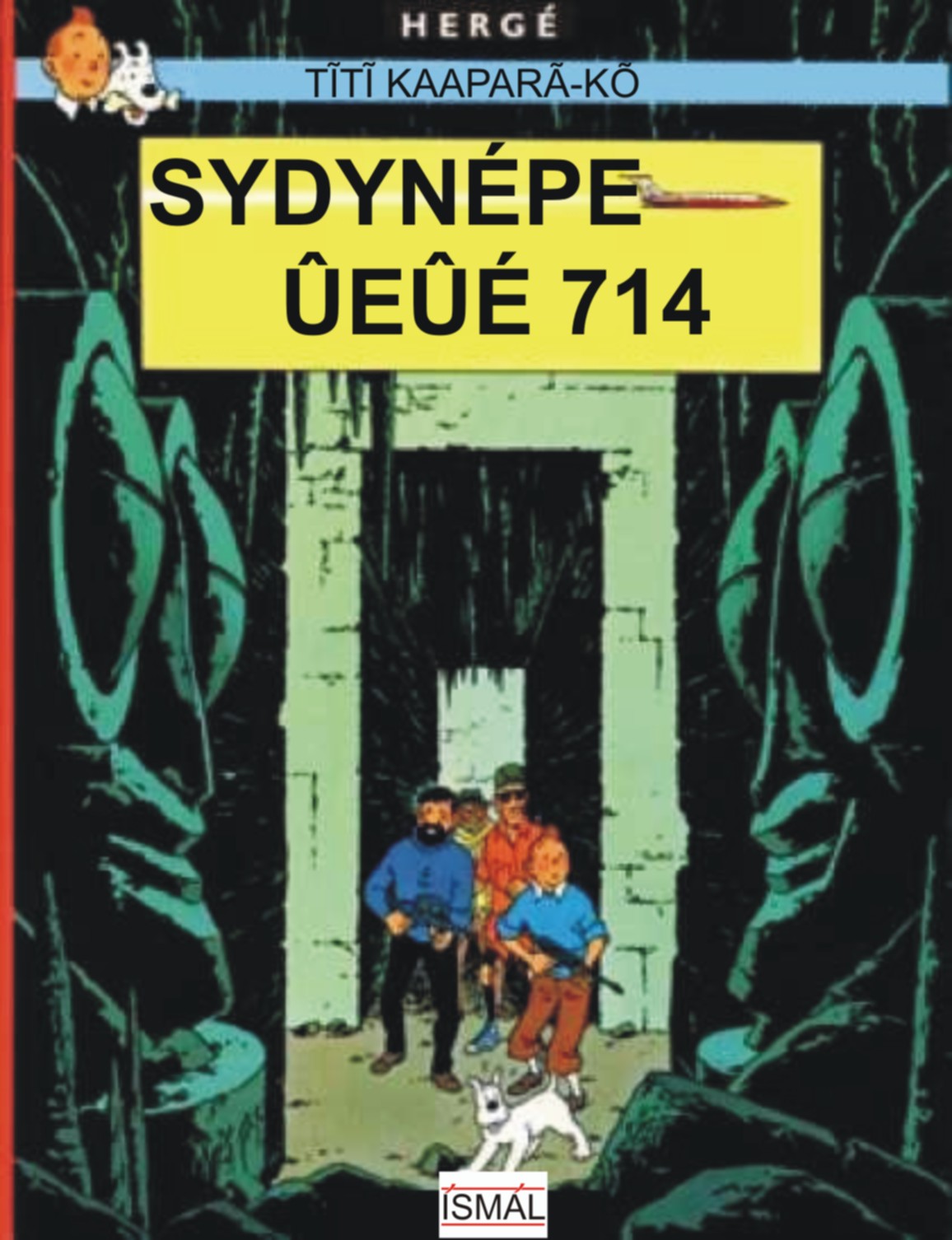
THE
YUTYRAMAN LANGUAGE
Introduction
Despite of Portuguese having the status of official language in the Republic of
Yutyrama, Yutyraman or ytyrãjeẽ /ɨtɨrãʒɛ'Ɂɛ̃/ is the native language
and sometimes considered the "national language" of
the country. Originally, it was spoken by the Tupi-Guarani tribe of Ywytyrawa
that migrated from Tumuk Humak ridge to the territory between the rivers Oyapock and Kanatuna
during the seventeenth century. Currently it is spoken by around
15% of the population of Yutyrama, about 42,000 people. Since 2012, the
language is taught
to children in all the public schools of the country, in order to
preserve the ancestral culture.
The language belongs to the Tupian family and is classified as belonging to the Tupi-Guarani group and Wayampi subgroup (subgroup VIII) with 8 other languages, such as Anambé, Urubu-Kaapor, Anauá, Zo'é, Emerillon and Wayampi. Yutyraman, Wayampi, Zo'é and Emerillon are the only Tupian languages spoken to the north of the Amazon river, in a region where Cariban and Arawakan languages are preponderant.
Yutyraman (ytm) has a relatively simple phonemic inventory with only 12 native consonants. There are 6 vowels, all of them with a nasal counterpart. The language is written with the Latin alphabet introduced by Jesuit missionaries in the end of seventeenth century. The writting underwent several orthographic reforms, the last one in 2012 that changed the glides y /j/ into î, to differentiate of y used to write the vowel /ɨ/, and w /w/ into û, and eliminated the h used to indicate the glottal stop /Ɂ/. So, the name of the language in Yutyraman, previously written ytyrãjehẽ became ytyrãjeẽ , wiãpok became ûiãpok and moyu became moîu after the reform,
Yutyraman
is agglutinative and classified as an active-stative language of fluid-S type.
Used
as the daily language by most people in Yutyrama, Caboquiró
is a dialect of Portuguese with some
grammatical features and a significant vocabulary from Yutyraman. It is being used as a lingua franca
by the Portuguese colonizers, the Yutyraman-speaking comunity and other indigenous minorities.
Phonology
Consonants
Stops: /p/,
/t/, /k/, /Ɂ/
Affricates: /ʒ/
Fricatives:
/s/, /ʃ/
Nasals:
/m/, /n/
Lateral:
/r/
Semi-vowels:
/w/, /j/
Vowels
/i/, /ɨ/, /ɛ/, /a/, /ɔ/, /u/, /ĩ/, /ɨ/̃, /ɛ̃/, /ã/, /ɔ̃/, /ũ/
Morphology and Syntax
The language has no grammatical gender and no articles. Numerals serve as indefinite article and demonstrative pronouns can be used as definite articles. Both preceed the nouns. Adjectives follow the nouns. So for example, kûasatu is 'book', 'a book' or 'the book'; ekûé kûasatu means 'that book' or 'the book'; ipé tejau means 'one pig' or 'a pig'; kujã porã means 'pretty woman'.
Personal pronouns have 3 forms, (i) free, (ii) possessive prefix and prefix of stative/descriptive verbs (iii) prefix of active (transitive and intransitive) verbs.
| Pronoun |
Free Form |
Stative/Possessive Prefix |
Active Prefix |
| I |
ijé |
je |
a |
| you (sing) |
ené |
ne |
ere |
| he, she, it |
ae |
i |
o |
| we (inclusive) |
oré |
ore |
oro |
| we (exclusive) |
jané |
jã |
ja |
| you (plural) |
pejẽ |
pẽ | pe |
| they |
ûĩkõ |
i/ikõ |
o |
Some examples:
1. Stative/descriptive verbs and possessive pronouns:
je-pirã 'I'm red'
i-pirã 'he/she/it is red'
je-ymã 'I'm old'
ae jerepak 'he saw me' or 'I was seen by him'
ne-ru 'your father'
ené ru 'you are father'
2. Active
verbs:
a-meẽ i-ru-pe yûá 'I gave (meẽ) the fruit (yûá) to his father (ru)'
jaûá ymé o-juká 'the dog (jaûá) killed the duck (ymé)'
ere-ju
Garimpeiros-suí pa? 'did you come from Garimpeiros'
The genitive is formed using a possessive prefix or by juxtaposition of two nouns, following the order possessor- possession. For example: ûyra-r-akã 'bird's head' from ûyrá 'bird' and akã 'head'; i-r-ok 'his/her house', from ok (house).
The imperative of verbs is made with the prefix 'e-' for the second person. The negative is made with n- and -i circumfixed to the verb. So: e-u 'eat'; kya seûexá n-a-r-yu-i 'I didn't drink this beer'; ny-ja-ûa-i 'we don't go'
numerals
1. ipé
2. mukũ
3. mapy
4. junyk
5. jepó
6. jepoipé
7. jepokũ
8. jepomapy
9. jepojunyk
10. mukumó
Lexicon
An interesting characteristic of the language is the modern and technologic vocabulary. In spite of borrowing words such as 'police', 'television' or 'car' from English or Portuguese, these words were created based on Yutyraman and, sometimes, on Old Tupian words. So, for example:
tekorekûá 'police' or 'guardian of the law'
ûykûá 'car' or 'which moves on the land'
epak ûytukûá 'TV' or 'vision that moves in the air'
asaratãtu 'electricity' or 'lightning power'
itajypokûá 'train' or 'which moves on the stone liana'
moãmakĩ 'computer' or 'thinking machine'
tatay 'alcohol' or 'water of fire'
kaîxĩkay 'gasoline' or 'oil of white gas'
mejupeûá 'pizza' or 'flat beiju', where 'beiju' is a cake made of manioc flour
The Yuklandic Ísðorian Institute of Languages (ÍSMÁL - Ísðorsk Stofnunín af Málum), dedicated to promote endangered languages of the world by translating and publishing books, comics and films into these languages, published some Hergé's albuns of Tintin in Yutyraman (The Crab with the Golden Claws, Tintin in the Land of the Black Gold, Tintin in Tibet, Destination Moon, Flight 714 to Sydney):




